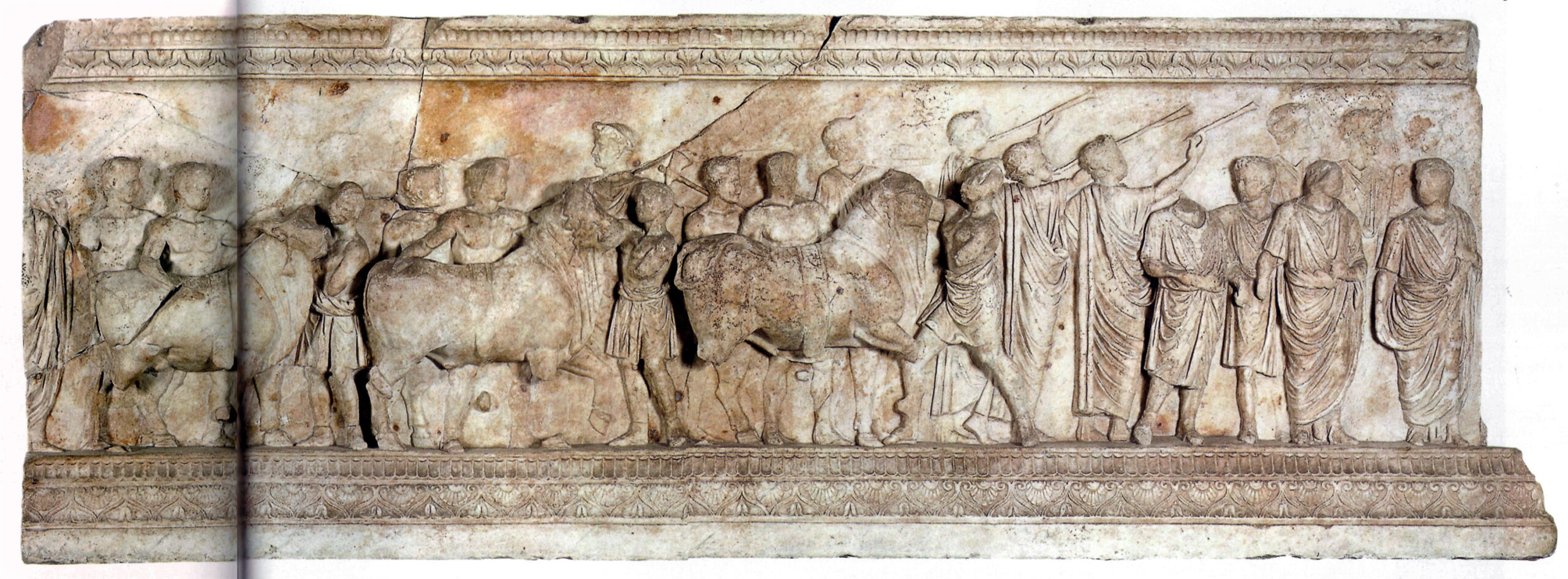Lysimachus’ pompe in Samothrace
| TITLE: |
| Lysimachus’ pompe in Samothrace |
| DATE: |
| c. 301-281 BC |
| TEXT: |
| IG 12.8.150 = Syll.3 372 |
| EDITIONS/TRANSLATIONS: |
| IG 12.8.150 = Syll.3 372 |
| KEYWORDS: |
| Word used to mean procession: |
| πομπεύω (l. 26, πομπεύειν) |
| Word used to mean the cult images: |
| βωμόν (l. 23) |
| Gods or other entities named: |
| Lysimachos Euergetes (l. 24, Λυσιμάχου εὐεργέτου, “benefactor”) |
| Description of the cult images: |
| The altar sholud be as beautiful as possible (l. 25, [ὡ]ς κάλλιστογ) |
| Procession’s route: |
| It ended in the altar (there) set up in honor to Lysimachos (l. 28, ταύτηι) |
| Frequency with which the procession takes place: |
| Every year (l. 25, κατ’ ἐνιαυτὸν) |
| Performers: |
| The nine archons and all the citizens wearing wreaths (l. 26-28, τοὺς ἐννέα ἄρχοντας [κ]αὶ στεφανηφορεῖν τοὺς πολίτας [πά]ντας) |
| References to the public attending the procession: |
| All the citizens wearing wreaths (l. 27-28, στεφανηφορεῖν τοὺς πολίτας [πά]ντας) |
| Rites related to the procession: |
| Sacrifices (l. 25, θύειγ) |
| Allusions to conduct or forms of reverence: |
| Other remarkable elements: |
| The people of Samothrace voted and decided to honor king Lysimachos “for the protection that he exercised when he captured and turned over to the administrators of the sanctuary certain ‘sacrilegous people’ [(l. 4 [τ]οὺς ἀσεβήσαντας εἰς τὸ ἱερὸγ)] who had broken in and stolen dedications made by the kings and other Greeks. (…) Lysimachos is praised for his piety (…). The main theme of the inscription is the contrast between the piety of Lysimachos and the impiety of the intruders” (Cole 1984, pp. 21-22) |
| BIBLIOGRAPHY: |
| BÖMMER (1952), RE: s.v. Pompa. Herrscher, Vol. XXI.2, p. 1968, n.298 COLE, S. G. (1984): Theoi Megaloi: the cult of the Great Gods at Samothrace, Brill, Leiden, pp. 21-22 |
